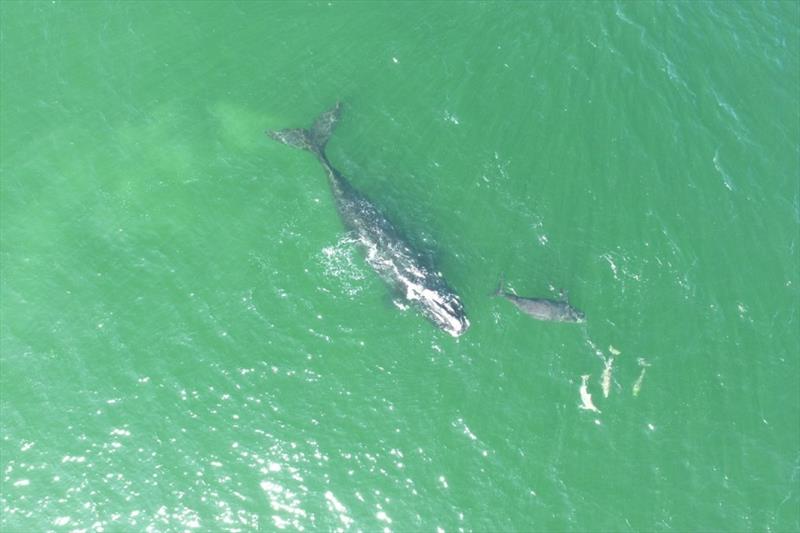
Help right whales: give them space
by NOAA Fisheries 9 Mar 2019 12:34 UTC

An endangered right whale mom and baby © NOAA Fisheries
The North Atlantic right whale is one of the world's most endangered large whale species, with only about 400 animals remaining. NOAA scientists, resource managers, and partners are coordinating closely to solve this urgent conservation challenge. We need to do everything we can to ensure their survival.
Part of our work includes conducting annual aerial surveys to assess their population and document new calves. This video was taken using an unmanned aerial vehicle under a special research permit. It captures a right whale mom, her calf, and some curious dolphins.
While we appreciate the public's enthusiasm and interest in right whales, we ask that you give these animals their space. This time of year, right whale moms are nursing their calves. The quiet bonding time is important for the newborn whales. It can be dangerous for both right whales and people to get too close to each other.
It is against the law to be within 500 yards of a right whale (that's the length of five football fields). If you find yourself within 500 yards of a right whale, move away as soon as safely possible. This law includes vessels, aircraft and unmanned aerial vehicles (drones).
If you see a right whale in the wild call us at (877) WHALE-HELP.